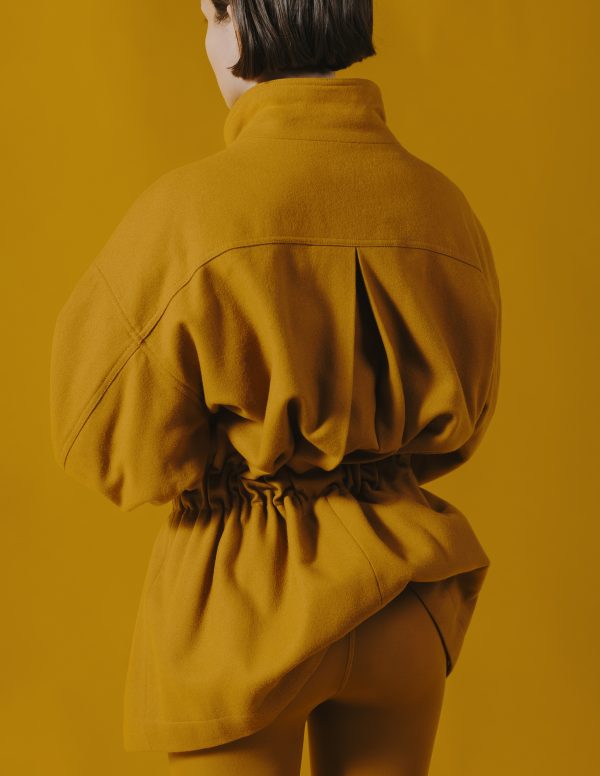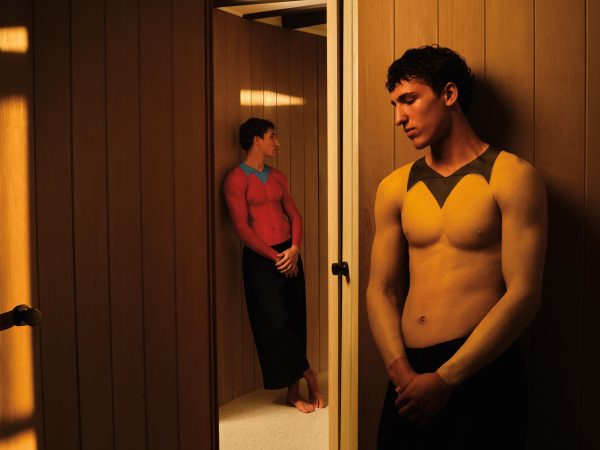
We Belong Together by Flo Meijer
When we reported on last year’s FASHIONCLASH Festival, we noted how the event had evolved over the years from a largely catwalk-based format to a multi-platform showcase incorporating performance, film and more. But the annual festival, which takes place in November in Maastricht (The Netherlands), has continued to adapt and innovate. Although it’s always provided an opportunity for young designers and artists to not only display their work to an international audience, but to come together for discussion and collaboration, for its 15th edition, it took this one step further.
The three-day festival is a culmination of the work of the FASHIONCLASH Foundation, which runs programmes throughout the year. This edition included the work of over 100 designers and makers from more than 30 countries, selected both from open calls and the foundation’s own projects and collaborations. However, the festival is not just about showing selected output. The organisers are keen to involve young creatives in shaping how the festival itself is produced and presented, from the opening night to the closing party.

Retazos by Christian Velasco
Even the festival campaign was developed using a collaborative format, in which over 40 young people took part in a pop-up atelier that was run in partnership with Centre Céramique during April and May. Under the supervision of designers, photographers and video makers, the participants (the youngest of which was just eight years old) produced garments, photos and films that were brought together for the campaign and exhibited during the festival.
The proceedings opened with the New Fashion Narratives exhibition. However, this year, FASHIONCLASH invited five independent fashion practitioners (Enzo Aïtaci, Chinouk Filique, Jonathan Ho, Lotte de Jager and Boris Kollar) to come up with the concept and to curate. Rather than focus on the final product, the curators decided to explore the process, something the public rarely gets to see. “What happens during the creation process?” they asked. “What types of creative references get used and lost? What are the different collaborations required in order to make one’s final vision come to life?”
The result was a fascinating journey into the creative practices of around 20 exhibitors, but we were particularly struck by KKJ, a collective of three artists (@kmorojele, @jackmarkovitz and @klnmuis) based in Johannesburg, South Africa. Drawing from its immediate surroundings, KKJ uses editorial stills and documentaries to explore and challenge the fashion narratives around upcycling and artisanal crafts.
For Dunusa: Life of a Garment, KKJ focused on the deconstruction and reimagining of clothing from Johannesburg’s second-hand street market Dunusa. Taking discarded items, which have originated from European exports, KKJ uses experimental local crafts and indigenous influences to instil its “own sensibilities into the Eurocentric way of dress”. At the same time, it highlights the “stark disparity between the global north and south” and the overconsumption of the West, which has had a direct impact on Africa’s landfills.
Elsewhere on the programme, we got to see the work of OUR SHIFT, a Copenhagen-based activist fashion brand, which is concerned with the massive quantity of clothing that ends up incinerated or in landfills. Its project Don’t Trash Tents, Thanks! focused on music festival sites, asking, “Have you ever seen the festival camp areas, after people leave?” It is breath-taking, in the worst possible way…It’s like a battlefield. People leave tents of 1,300 Euros, just because they don’t want to carry them, since they are too ‘tired.’” OUR SHIFT is taking these tents (as well as clothing and other items left behind) and turning them into garments and bags, but also aims to raise awareness of this overlooked issue.
In our opinion, education on waste and its environmental and social impact cannot begin too early. With this in mind, FASHIONCLASH has been working with theatre maker Mayke Roels to bring the discussion to schools in a non-judgemental and engaging way. Who Cares What You Wear? is an interactive theatre performance for young people to get them thinking about sustainability. Having already toured many schools in The Netherlands, there are now discussions to launch the initiative in Austria. Festival guests were invited to a talk to hear more about this and other projects of the Fashion Makes Sense participation programme.
There was much more to explore at the festival, but we must mention fashion film, which has become a key component on the schedule, with screenings at the wonderful Lumière cinema. This year, there were 41 shorts selected from around the world, with HUM (we/us) – a film by Ashim Ahluwalia and Shilpa Chavan that tackles societal norms and the idea of belonging – bagging the FASHIONCLASH Fashion Film Award. From the other four finalists, we especially enjoyed We Belong Together by Flo Meijer (featuring nadie.studio), an amusing celebration of “the notion of community and belonging to a group through the use of fashion”.
We are also pleased to provide and update on THE HOOOOOOODIE PROJECT, which we reported on last year. Using the challenge of assembling – piece by piece – a hoodie with the world’s longest sleeves, the project has brought together over 500 people, enabling many of them to make art for the first time, and is now complete with the sleeves measuring over 300m long. On display at Centre Céramique during the festival, the hoodie is now seeking a new home.
Since 2009, FASHIONCLASH has provided a stage and support for more than 1,500 artists and designers from around the world, but it’s also sought to include and interact with people, young and old, from all walks of society, so that anyone and everyone can discover, create and come on board.
Read more about the FASHIONCLASH Festival here.
words. Huma Humayun

































































































